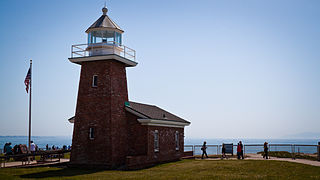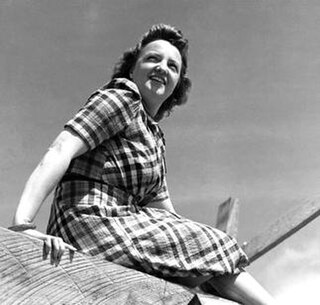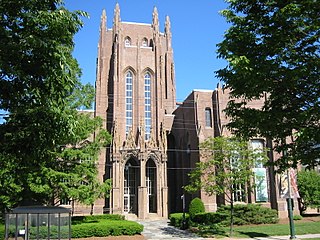
A museum is an institution dedicated to displaying and preserving culturally significant objects. Many museums have exhibitions of these objects on public display, and some have private collections that are used by researchers and specialists. Compared to a library, a museum hosts a much wider ranges of objects and usually focus around a specific theme such as the arts, science, natural history, local history, and other topics. Public museums that host exhibitions and interactive demonstrations are often considered to be tourist attractions, and many museums attract large numbers of visitors from outside their host country, with the most visited museums in the world regularly attracting millions of visitors annually.

The Field Museum of Natural History (FMNH), also known as The Field Museum, is a natural history museum in Chicago, Illinois, and is one of the largest such museums in the world. The museum is popular for the size and quality of its educational and scientific programs, and its extensive scientific specimen and artifact collections. The permanent exhibitions, which attract up to 2 million visitors annually, include fossils, current cultures from around the world, and interactive programming demonstrating today's urgent conservation needs. The museum is named in honor of its first major benefactor, Marshall Field, the department-store magnate. The museum and its collections originated from the 1893 World's Columbian Exposition and the artifacts displayed at the fair.

A curator is a manager or overseer. When working with cultural organizations, a curator is typically a "collections curator" or an "exhibitions curator", and has multifaceted tasks dependent on the particular institution and its mission. The term "curator" may designate the head of any given division, not limited to museums. Curator roles include "community curators", "literary curators", "digital curators", and "biocurators".
The Carnegie International is a North American exhibition of contemporary art from around the globe. It was first organized at the behest of industrialist and philanthropist Andrew Carnegie on November 5, 1896, in Pittsburgh. Carnegie established the International to educate and inspire the public as well as to promote international cooperation and understanding. He intended the International to provide a periodic sample of contemporary art from which Pittsburgh's Carnegie Museum of Art could enrich its permanent collection.

The Santa Barbara Museum of Natural History is a natural history museum in Santa Barbara, California.

The South Australian Museum is a natural history museum and research institution in Adelaide, South Australia, founded in 1856 and owned by the Government of South Australia. It occupies a complex of buildings on North Terrace in the cultural precinct of the Adelaide Parklands. Plans are under way to move much of its Australian Aboriginal cultural collection, into a new National Gallery for Aboriginal Art and Cultures.

The Schomburg Center for Research in Black Culture is a research library of the New York Public Library (NYPL) and an archive repository for information on people of African descent worldwide. Located at 515 Malcolm X Boulevard between West 135th and 136th Streets in the Harlem neighborhood of Manhattan, New York City, it has, almost from its inception, been an integral part of the Harlem community. It is named for Afro-Puerto Rican scholar Arturo Alfonso Schomburg.

The Royal Alberta Museum (RAM) is a museum of human and natural history in Downtown Edmonton, Alberta, Canada, located north of City Hall. The museum is the largest in western Canada with more than 7,600 square metres (82,000 sq ft) exhibition space and 38,900 square metres (419,000 sq ft) in total.

The Santa Cruz Surfing Museum is a museum which was established in May 1986 to document the history of surfing. With collections dating back to the earliest years of surfing on mainland United States, the museum houses a historical account of surfing in Santa Cruz, California.

Guyana National Museum is a museum in Georgetown, Demerara-Mahaica, Guyana. It was established on 13 February 1868. The idea of starting a museum was conceived by members of the Royal Agricultural and Commercial Society (RACS) of British Guiana. When RACS was established in 1844, one of its aims was to construct a Museum to house local minerals, soils, timbers, fruits, seeds, gums, resins, dyes and drugs, as well as the flora and fauna of the country. British explorer Robert Schomburgk, the German botanist Carl Ferdinand Appun, Mr Bratt, and W.H. Campbell presented gifts to the RACS in order to start a Museum Collection. A fire in 1864 destroyed the donated collections.

Laura Boulton was an American ethnomusicologist. She is known for the many field recordings, films and photographs of traditional music and its performances and practitioners from Egypt, the Sudan, Uganda, Kenya and Tanganyika. Boulton also collected traditional musical instruments around the world. In her work with the National Film Board of Canada (NFB) during the Second World War, she is recognized as being a pioneer for women who work in the film industry.

The Chesapeake Bay Maritime Museum is located in St. Michaels, Maryland, United States and is home to a collection of Chesapeake Bay artifacts, exhibitions, and vessels. This 18-acre (73,000 m2) interactive museum was founded in 1965 on Navy Point, once a site of seafood packing houses, docks, and work boats. Today, the museum houses the world's largest collection of Chesapeake Bay boats and provides interactive exhibits in and around the 35 buildings which dot the campus. The museum also offers year-round educational seminars and workshops.

The Kitchen Sisters are Davia Nelson and Nikki Silva, who are National Public Radio radio producers in the United States.

A natural history museum or museum of natural history is a scientific institution with natural history collections that include current and historical records of animals, plants, fungi, ecosystems, geology, paleontology, climatology, and more.

The Guam Museum, formally the Senator Antonio M. Palomo Guam Museum & Chamorro Educational Facility, is a museum focusing on the history of Guam, a U.S. territory in Micronesia. A permanent building to house the museum's collection opened in Hagåtña on November 4, 2016. The Guam Museum had been housed in temporary locations since World War II.
Amada Cruz is the director and CEO of the Santa Barbara Museum of Art. She was director of the Seattle Art Museum until October 2023 and was The Sybil Harrington Director & Chief Executive Officer of Phoenix Art Museum from February 2015 through mid 2019.. Cruz has been embroiled in several controversies over the course of her career, including alleged discrimination of unhoused individuals at the Seattle Art Museum, allegedly creating a hostile work environment at the Phoenix Art Museum, and terminating the employment of an Asian American museum curator at the Santa Barbara Museum of Art.

The Peabody Museum of Natural History at Yale University is one of the oldest, largest, and most prolific university natural history museums in the world. It was founded by the philanthropist George Peabody in 1866 at the behest of his nephew Othniel Charles Marsh, an early paleontologist. The museum is best known for the Great Hall of Dinosaurs, which includes a mounted juvenile Brontosaurus and the 110-foot-long (34 m) mural The Age of Reptiles. The museum also has permanent exhibits dedicated to human and mammal evolution; wildlife dioramas; Egyptian artifacts; local birds and minerals; and Native Americans of Connecticut.
Patricia Marroquin Norby is the associate curator of Native American art at the Metropolitan Museum of Art. On September 14, 2020, she became the first full-time person of Indigenous descent hired for a curatorial position in the museum's 150-year history. Her Purépecha and Apache heritage has influenced her art since she was a young girl. She has worked for several museums and curated art of indigenous people, thoughtfully considering the lives of the artists and to faithfully present their art, breaking down past practices used by European Americans.
The Sanchez Art Center is a nonprofit arts organization located in Pacifica, California. It was formed in 1996 by local artists and community members.

William Walter Jefferis was an American mineralogist and curator of the William S. Vaux Collection of minerals and artifacts at the Philadelphia Academy of Natural Sciences from 1883 to 1898. He personally collected and cataloged 35,000 mineral specimens, which he sold to the Carnegie Museum of Natural History in 1905.

















